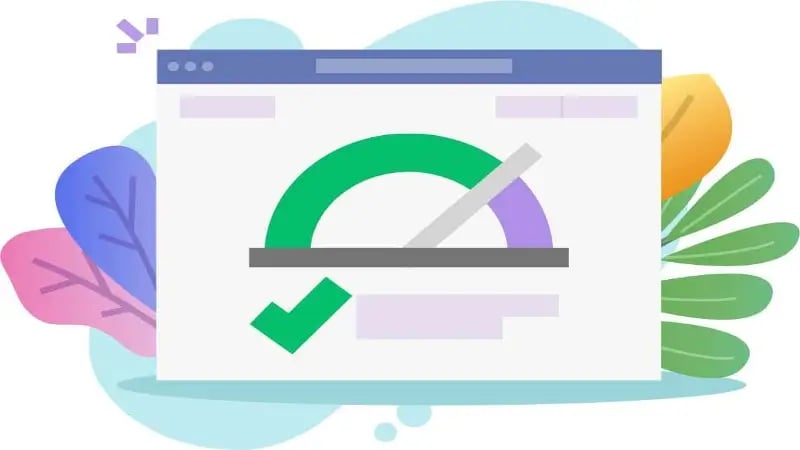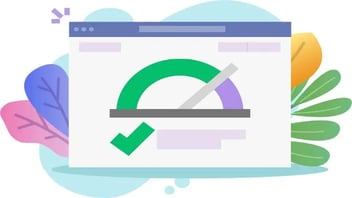Do you want more traffic, more leads, and more sales? You can optimize your website performance regularly to facilitate search engine optimization (SEO) or a website redesign. An improved website will increase your marketing performance, drive more traffic, lead to higher conversions, and yield a better return on your efforts. One of the factors is Largest Contentful Paint.


What is Largest Contentful Paint?
Largest Contentful Paint (LCP) is a web performance metric that measures the loading performance of a website or web application. It is the time from when the page starts loading to when the largest content element (text or image) is rendered on the screen.
LCP is a crucial metric for Search Engine Optimization (SEO) and web designers and an integral part of understanding your website performance; it is intended to measure loading performance from the user's perspective, and it's an important metric in improving your Google rankings because it measures when the page's main content is visible to the user. A fast LCP score can make users perceive a web page as loading quickly, while a slow score can lead to users prematurely leaving the site. A good LCP score should be under 2.5 seconds.
What is the Impact of Largest Contentful Paint?
To enhance the performance of your website and the overall user experience, it is crucial to understand the impact of LCP on a website's user experience.
-
A slow LCP score can indicate that the main page content needs to load more quickly, potentially leading to users leaving the site prematurely. This can result in a high bounce rate, negatively impacting the website's search engine ranking and overall visibility. Slow load times can frustrate users, especially those on slow internet connections or low-end devices. A slow LCP can negatively impact conversion rates, as users may not stay long enough to complete the desired action.
-
A fast LCP score can make users perceive the website as loading quickly, leading to improved engagement, higher conversion rates, and increased user satisfaction. A good LCP score should be under 2.5 seconds; anything above that may be considered slow and result in a poor user experience.
It's worth noting that LCP is not the only metric that determines a website's performance; other metrics, such as First Contentful Paint, Speed Index, Time to Interactive, and Total Blocking Time, also play a crucial role in determining the overall performance of a website and its page experience.
How well is your website performing? Grade your website and know in a minute:

This issue was identified during an SEO audit for your website; what steps can you take to improve LCP and enhance the user experience on your site? Here are several steps you can take to improve Largest Contentful Paint (LCP) on your website:
-
Optimize images: Optimizing images, such as compressing and resizing them, can help reduce the time it takes to load and improve LCP.
-
Minimize the use of large third-party scripts: Large third-party scripts can slow down page loading and negatively impact LCP. Minimizing their use or loading them asynchronously can help improve LCP.
-
Use a Content Delivery Network: A Content Delivery Network (CDN) can speed up the delivery of your website's content to users by caching it on servers closer to the user.
-
Use code splitting: Code splitting is a technique that allows you to split your JavaScript code into smaller chunks that can be loaded on demand. This can help reduce the time it takes for the initial JavaScript to load and improve LCP.
-
Use browser caching: Browser caching enables a browser to store a copy of your website's resources on the user's device, eliminating the need for repeated downloads on subsequent visits. This can help reduce the time it takes for the resources to load and improve LCP.
-
Minimize heavy web fonts: Heavy web fonts can slow page loading and negatively impact LCP. Minimizing heavy web fonts or utilizing web font loading techniques, such as the font-display CSS property, can help improve LCP.
-
Monitor and measure your LCP score: Utilize browser developer tools or web-based LCP testing tools to track and assess your LCP score, identifying areas for improvement.
-
Defer loading of non-critical resources: Defer non-critical resource loading, such as analytics, social media widgets, or ads, until the main page content is loaded and visible to the user.
It's worth noting that improving LCP is an ongoing process, and you should regularly monitor your website's performance and adapt your optimization strategies accordingly. As with any optimization, it's essential to test your website/web app in different browsers and devices, as LCP can be affected by other factors.
Tools to use
There are several web design and SEO tools available to help you improve Largest Contentful Paint (LCP) on your website or web application:
-
Browser developer tools: Most modern browsers include tools that can help you measure and identify LCP on your website. For example, in Google Chrome, you can use the Lighthouse tool in the Audits panel of the developer tools to measure your LCP score and identify potential issues.
-
WebPageTest: WebPageTest is an open-source website performance testing tool that can measure your site's LCP score and identify the specific elements causing slow LCP.
-
Calibre: Calibre is a web-based tool that allows you to test your website and measure its LCP score. It also gives a detailed breakdown of the elements causing slow LCP and how to fix them.
-
SpeedCurve: SpeedCurve is a website performance monitoring tool that allows you to measure the LCP score of your website over time and identify patterns or trends that may indicate areas for improvement.
-
Chrome User Experience Report: This report is a public dataset of user experience metrics for popular origins on the web, as experienced by Chrome users under real-world conditions. The data is collected from the Chrome User Experience Report (CrUX) API, which provides accurate user data on performance metrics, such as Largest Contentful Paint.
-
Google Search Console: Google Search Console has added a new Core Web Vitals report, which includes LCP. This is a great way to monitor your website's LCP score and identify any pages causing issues.
Combining these tools and techniques can give you a more comprehensive understanding of the LCP on your website and help you make more effective improvements.
LCP is a critical metric to consider when evaluating the performance of your website. By understanding the impact of LCP on user experience and conversion rates, you can improve website performance and ultimately drive more revenue for your business.












Leave a Comment